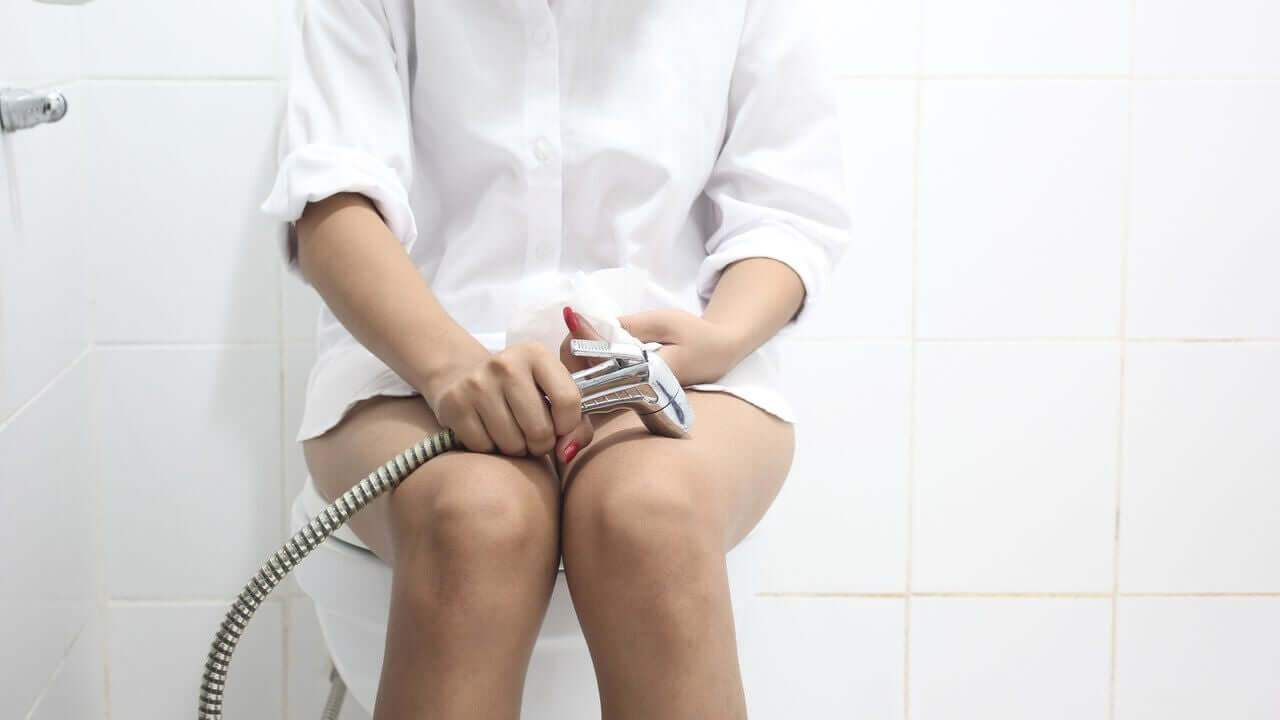Physiologic Leukorrhea: What Is It?

Physiologic leukorrhea is a very common situation in women. It basically consists of an increase in vaginal discharge. However, although it can be very uncomfortable, it is not usually caused by any health problem.
It’s a good idea to distinguish physiological leukorrhea from illness-related leukorrhea. This is because, on some occasions, it may be due to an infection or to some object inside the vagina. Normally, physiologic leukorrhea occurs just before menstruation.
The amount of discharge can be very abundant. In some cases, it can also irritate the vulva or the woman may feel embarrassed or upset. Therefore, in this article, we’ll explain what physiologic leukorrhea is and what to do about it.
What is vaginal discharge?

Vaginal discharge is a fluid that the body secretes into the female reproductive system, especially into the walls of the vagina. Its functions are very diverse, such as acting as a lubricant to have sexual intercourse and pregnancy possible.
The flow varies continuously during the menstrual cycle according to hormonal activity. Under normal conditions, it’s transparent or whitish. Nevertheless, there are occasions when these secretions can vary a great deal.
When vaginal discharge changes color (becoming yellow or slightly green), odor, or consistency, it may be due to some problem. For example, an infection. The same happens when the amount to discharge increases or decreases too much.
Therefore, it’s important to pay attention to our flow and its characteristics. Any change can be a sign of an infection and can even be a sexually transmitted disease. If you have any doubts, you should consult your gynecologist.
You may be interested in: The Different Types of Vaginal Discharge
What is physiologic leukorrhea?
The term leukorrhea refers to an increased amount of vaginal discharge. As we’ve mentioned before, this may be due to an infection or some health problem. However, it can also simply be a normal condition.
Physiological leukorrhea is therefore an increase in vaginal discharge that’s not due to any illness or health problem. In this case, the discharge is usually clear or slightly white. In addition, the smell is usually normal.
The problem is that physiologic leukorrhea can be a concern for women. It can even be very uncomfortable due to its abundance or because, in some cases, it irritates the woman’s vulva.
The cause of this situation is not well-known. Most believe that the hormonal changes during the menstrual cycle are the main cause of the increased flow.
At the same time, experts have linked it to stress or excessive hygiene in the area. Also, with sexual excitement and pregnancy. But the truth is that it can happen even in babies or girls.
You might like: 5 Home Remedies for Embarrassing Vaginal Odors
What can you do about physiologic leukorrhea?

The main thing you need to do is go to your family doctor or gynecologist. In the event of leukorrhea, it’s important to rule out that the cause is an infection or the presence of a foreign body in your vagina.
To do this, the doctor will take a sample of your vaginal fluid, which is a simple and painless test. You shouldn’t feel ashamed or afraid when you go to the gynecologist. Once the sample is taken, the professional will send it to a laboratory.
There, they’ll perform a culture to rule out the existence of harmful bacteria in your vagina. This test can give false negatives, but it’s easy to repeat and, in addition, your gynecologist will usually take other symptoms into account as well. If there’s no bad smell or other discomfort, it’s usually physiologic leukorrhea.
Once it is clear that it’s physiological leukorrhea, and that there’s no illness, there are a number of simple measures you can take to reduce your discomfort:
- Try to maintain proper hygiene. This doesn’t mean that it should be excessive–on the contrary. It’s better to wash your intimate area only with water.
- You should also dry the area well. Be careful, you must do it gently so as not to increase irritation.
- Use cotton underwear that’s not tight-fitting.
- If you have your period, choose the protection you use carefully. Using tampons can encourage infection, and panty liners can irritate the area.
In conclusion
Physiological leukorrhea refers to an increase in vaginal discharge that’s not related to any illness. If you notice changes in your discharge, then it’s best to see your doctor as soon as possible to rule out any possible illness and take necessary measures.
All cited sources were thoroughly reviewed by our team to ensure their quality, reliability, currency, and validity. The bibliography of this article was considered reliable and of academic or scientific accuracy.
- Instituto Superior de Ciencias Médicas (Villa Clara, C., & Pestana Pérez, N. (1997). Revista Medicentro electrónica. Medicentro Electrónica (Vol. 21). Instituto Superior de Ciencias Médicas de VC. Retrieved from http://scielo.sld.cu/scielo.php?script=sci_arttext&pid=S1029-30432017000200007
- Spence D, Melville C. Vaginal discharge. BMJ. 2007;335(7630):1147–1151. doi:10.1136/bmj.39378.633287.80
- López–Olmos, J. (2012). Leucorreas líquidas y cremosas: diferencias clínicas y microbiológicas (estudio prospectivo de 1 año). Clínica e Investigación En Ginecología y Obstetricia, 39(2), 57–63. https://doi.org/10.1016/j.gine.2011.11.005
- McCathie, R. (2006). Vaginal discharge: common causes and management. Current Obstetrics and Gynaecology, 16(4), 211–217. https://doi.org/10.1016/j.curobgyn.2006.05.004
This text is provided for informational purposes only and does not replace consultation with a professional. If in doubt, consult your specialist.








